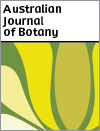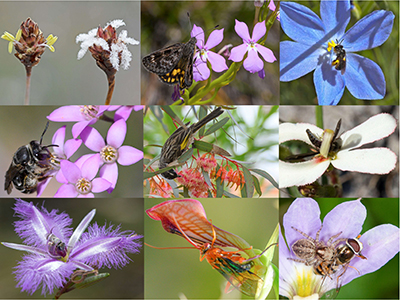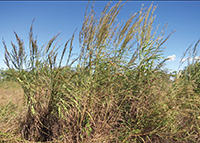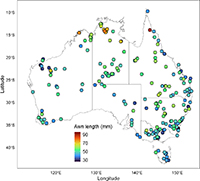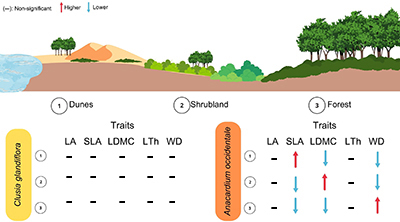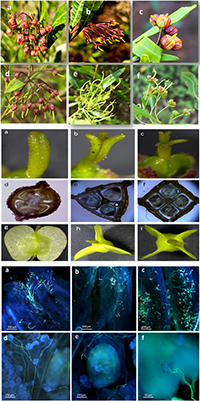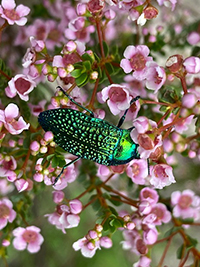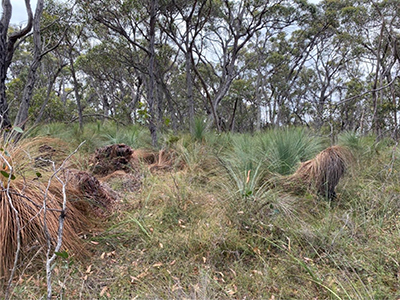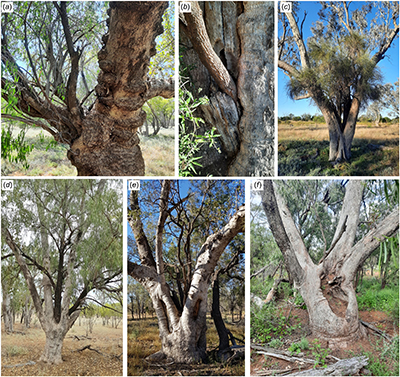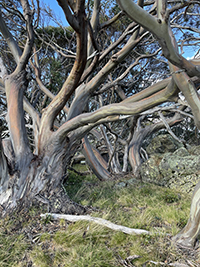Australian Journal of Botany
Volume 72
Number 2 2024
Pollination syndromes were allocated for all plants in the Southwest Australian Floristic Region, an ancient landscape and global biodiversity hotspot. Allocations based on floral traits were highly consistent and well supported by visitor records and scientific studies. Their complexity was highest in large plant families, involving many pollination transitions, especially from general insects to bees, birds or the wind. Photograph by Mark Brundrett.
Andropogon gayanus Kunth. was introduced to northern Australia from Africa as a forage crop but has become an invasive species that increases the risk of catastrophic wildfires. This study used freehand sectioning, microscopy, and scanning electron microscopy to compare leaf morphology of specimens from Australia and Africa to identify potential variations and describe characteristics that make it such successful as a weed. Leaf hairiness was found to be highly variable and may enhance its adaptability to Australian environments. Photograph by Keith R. McDonald.
Herbarium specimens of Themeda trianda were used to quantify awn-length variation of the species across its distribution. Awn lengths were shortest around the eastern and southern coasts of Australia and increased inland and towards the north, with awn length found to be positively correlated with mean annual temperature. Figure by A. M. Cavanagh.
Considering the role of plant species in the functioning of ecosystems, it is important to understand the ecological strategies that allow their survival in contrasting environments. We evaluated the functional responses of two species in a restinga environment and highlighted that species occuring in environmental gradients need to develop a set of diverse strategies to deal with differences in resource availability. Last, our comprehension of the survival mechanisms of plants helps us create accurate model predictions for entire ecosystems. Image by Beatriz Barbosa.
Reproduction in dioecious plant species may be limited by severe pollen limitation owing to their separate sexes. Dodonaea viscosa subsp. angustifolia is a dioecious and wind-pollinated species that has a long flowering period and this study determined the relationship between its reproductive behaviour and pollen availability during different flowering phases. The mechanism of extra-stigmatic pollen germination has been observed in this species, in which flexibility of female function adds to the evolutionary possibilities to overcome pollination constraints. Photographs by Sajid Khan.
Unlike most other groups, Myrtaceae flowers have oil glands in floral tissues. The apex of anthers of most species has an oil gland that can be obvious and globular or embedded within the apical tissues. Depending on the species, the oil may deter herbivores from eating the anthers, may mix with pollen to aid adhesion to pollinators or may be chemically modified to be a food source for pollinators. Photograph by P. Ladd.
The plant pathogen Phytophthora cinnamomi causes severe declines in Australian native vegetation. The iconic Australian grasstrees, which provide prime habitat for many vertebrates and invertebrates, are highly susceptible to the pathogen. This study found significant declines in susceptible species following infestation, particularly the austral grasstree, which had 50% less cover. These results have severe implications for heathy woodland communities and reliant fauna. Limiting the spread of P. cinnamomi and protecting grasstrees is critical for their security. Photograph by B. Wilson.
Epiphytes are typically associated with wet forests. We document an unusual concentration of epiphytes, typically associated with wet forests, from a eucalypt woodland in semi-arid New South Wales: 712 woody epiphytes were located, comprising 21 typically terrestrial species. Epiphytes were strongly associated with anthropogenically modified trees, and are likely to be widespread but overlooked components of some dryland ecosystems, particularly those with large trees with a history of anthropogenic modification and high species diversity. Photographs by Jane Pye.
We identify the extent and location of long-unburnt snow gum in Victoria, and make recommendations for the conservation management of such stands. Photograph by John Morgan.


